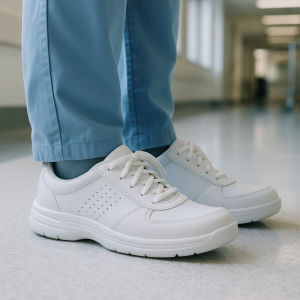 In politics, every detail matters. Candidates know that voters notice more than speeches and policy positions. Clothing, accessories, and even footwear can send a message. In recent years, sneakers associated with nurses and healthcare workers have become part of that messaging. Campaigns are using nurse sneakers as a subtle but powerful symbol of solidarity with frontline workers, tying them to the broader category of medical footwear, which represents care and dedication.
In politics, every detail matters. Candidates know that voters notice more than speeches and policy positions. Clothing, accessories, and even footwear can send a message. In recent years, sneakers associated with nurses and healthcare workers have become part of that messaging. Campaigns are using nurse sneakers as a subtle but powerful symbol of solidarity with frontline workers, tying them to the broader category of medical footwear, which represents care and dedication.
Sneakers as a Political Statement
Fashion has long played a role in politics. From rolled-up sleeves at rallies to the choice of campaign buttons, appearance signals values. Sneakers have joined this tradition, partly because they stand out in settings where suits and polished shoes are the norm. When a candidate laces up sneakers designed for nurses, it isn’t just about comfort. It’s about aligning with a group that has earned enormous public trust. According to Gallup’s annual poll on honesty and ethics, nurses have topped the list for over two decades. Campaigns understand this. By wearing shoes associated with the nursing profession, a candidate taps into that trust and conveys respect for healthcare workers.
Why Nurse Sneakers?
Not all sneakers send the same message. Nurse sneakers are distinctive: practical, cushioned, designed for long shifts on hard floors. They represent endurance, care, and service. When a candidate chooses them, it signals that they value the same traits.
The symbolism works on several levels:
- Practicality: Nurse sneakers are built for hard work, not show. This contrasts with luxury footwear, which might suggest elitism.
- Solidarity: They connect the wearer to frontline workers who carried enormous burdens during the pandemic.
- Health Policy: They serve as a quiet but visible reminder that healthcare remains a central issue in political debates.
Campaign strategists know that these associations don’t need to be explained in a speech. Voters draw the connection themselves.
The Pandemic’s Lasting Influence
The COVID-19 pandemic magnified the visibility of healthcare workers. Images of exhausted nurses in scrubs and sneakers became symbols of resilience. Public appreciation grew, and so did the recognition of the physical demands of their jobs.
Campaigns quickly picked up on this shift. A candidate wearing nurse sneakers at a town hall or clinic visit signals that they understand the sacrifices made during the crisis. It also acknowledges that healthcare workers’ struggles didn’t end when the immediate emergency passed.
This visual strategy doesn’t replace policy, but it reinforces it. A candidate talking about healthcare reform while wearing footwear associated with nurses creates a layered message: both spoken and unspoken.
A Tool for Humanizing Candidates
Voters often distrust politicians for seeming disconnected from ordinary life. Sneakers help bridge that gap. Nurse sneakers, in particular, break the image of polished, untouchable officials and replace it with something more relatable.
Campaign photographers know this. Photos of candidates in sneakers circulate widely, showing them approachable, down-to-earth, and attentive to working people. In settings like hospital tours, campaign rallies, or community events, the footwear becomes part of the story.
Criticism and Risks
Of course, not everyone sees the strategy positively. Critics argue that wearing nurse sneakers without a history of supporting healthcare workers amounts to empty symbolism. Voters can spot a photo opportunity that doesn’t match a record.
There’s also the risk of appearing performative. If a candidate laces up sneakers but opposes expanding healthcare access, the choice seems more like a costume than a conviction. The power of the symbol depends on authenticity.
Healthcare workers themselves are divided. Some appreciate the gesture as recognition. Others see it as trivializing real struggles. Campaigns that use this strategy without substance risk alienating the very people they’re trying to honor.
Beyond the Shoes
What makes nurse sneakers an effective political tool isn’t the shoe itself. It’s the web of associations that comes with it. They point toward larger issues: workplace conditions, public health, access to care, and respect for essential workers.
For campaigns, the sneakers become shorthand. Instead of saying, “I stand with nurses,” the footwear says it without words. Combined with policies and actions, this can strengthen credibility. Standing alone, it risks being dismissed as a gimmick.
The Bigger Picture
Political campaigns will always use symbols. From hard hats to rolled-up sleeves, the goal is to align with groups of workers who embody values voters admire. Nurse sneakers are the latest addition to this tradition, shaped by the pandemic and the enduring trust Americans place in healthcare workers.
Their use shows how much politics depends on small, visible choices. A pair of sneakers may not decide an election, but it can shape perception. And in a campaign, perception is everything.
Conclusion
Nurse sneakers have become more than practical footwear. In the hands of political campaigns, they are a symbol of solidarity, trust, and respect for healthcare workers. Used authentically, they can help candidates connect with voters who value compassion and service. Used carelessly, they risk looking like costume politics.
As healthcare remains a central issue in American life, expect to see more campaigns lacing up. For voters, the challenge will be deciding whether the sneakers reflect a genuine commitment—or just another tactic on the campaign trail.






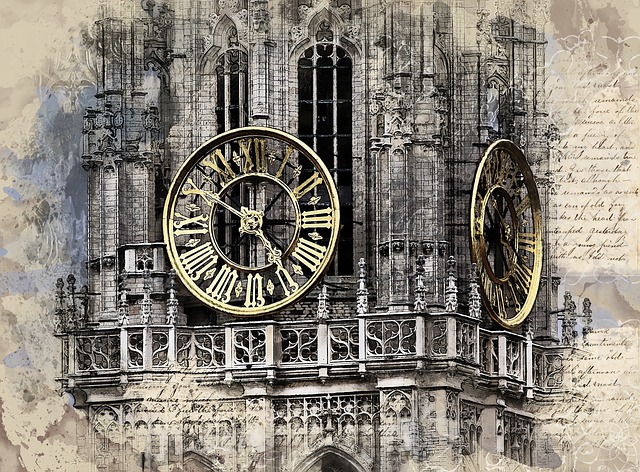

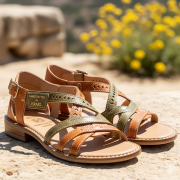 Sandal-making is an important tradition in Israel that has existed throughout the centuries. These sandals have their origins in biblical history and were modified to suit the Mediterranean climate. Originally, they were made to be comfortable and durable in rough environments. Today, the artisans in Israel still commemorate this legacy through the handicraft of sandals made of high-quality and sometimes vegetable-tanned leather. They are all mirrors of a careful attitude to details, so you can be sure that what you put on is not only durable but also very genuine.
Sandal-making is an important tradition in Israel that has existed throughout the centuries. These sandals have their origins in biblical history and were modified to suit the Mediterranean climate. Originally, they were made to be comfortable and durable in rough environments. Today, the artisans in Israel still commemorate this legacy through the handicraft of sandals made of high-quality and sometimes vegetable-tanned leather. They are all mirrors of a careful attitude to details, so you can be sure that what you put on is not only durable but also very genuine. Political campaigns thrive on passion and loyalty. Volunteers knock on doors, donors open their wallets, and supporters rally in the rain to push a candidate’s vision forward. But how do campaigns show gratitude for this dedication? A growing trend is the use of themed chocolate gift packs to sweeten the bond with supporters. These thoughtful gestures, filled with treats like Dark Chocolate or Caramilk selections, blend symbolism with sweetness, creating a memorable way to say ‘thank you’ and nurture loyalty.
Political campaigns thrive on passion and loyalty. Volunteers knock on doors, donors open their wallets, and supporters rally in the rain to push a candidate’s vision forward. But how do campaigns show gratitude for this dedication? A growing trend is the use of themed chocolate gift packs to sweeten the bond with supporters. These thoughtful gestures, filled with treats like Dark Chocolate or Caramilk selections, blend symbolism with sweetness, creating a memorable way to say ‘thank you’ and nurture loyalty. More than 65% of households in the United States own a pet, and the demand for designer dog breeds has surged in the last decade. Among these, the Pomsky—a cross between a Siberian Husky and a Pomeranian—has captured public attention for its adorable looks, loyal temperament, and adaptability to different living spaces. As these dogs gain popularity, the question arises: could the widespread love for Pomskies eventually reshape pet ownership laws and policies?
More than 65% of households in the United States own a pet, and the demand for designer dog breeds has surged in the last decade. Among these, the Pomsky—a cross between a Siberian Husky and a Pomeranian—has captured public attention for its adorable looks, loyal temperament, and adaptability to different living spaces. As these dogs gain popularity, the question arises: could the widespread love for Pomskies eventually reshape pet ownership laws and policies?
 Fashion has always been a mirror reflecting society’s values, struggles, and aspirations. Men’s harem pants are no exception. Originally inspired by Middle Eastern and South Asian attire, these loose-fitting, ankle-tapered pants have become more than a wardrobe staple. They now stand as a political statement, representing freedom, individuality, and resistance to societal norms.
Fashion has always been a mirror reflecting society’s values, struggles, and aspirations. Men’s harem pants are no exception. Originally inspired by Middle Eastern and South Asian attire, these loose-fitting, ankle-tapered pants have become more than a wardrobe staple. They now stand as a political statement, representing freedom, individuality, and resistance to societal norms.


 Contrary to this, society can see artists as creators based on causes. Some specialize in specific movements, crafting intricate designs that embody:
Contrary to this, society can see artists as creators based on causes. Some specialize in specific movements, crafting intricate designs that embody: 







 Wellness spaces like offices (OPs) offer a sanctuary for relaxation and self-care. These professional businesses provide massage, skin care, and spa treatments in cozy, intimate settings designed for customer comfort. In South Korea, particularly in cities like Daejeon, such spaces have become cultural staples, blending advanced beauty techniques with traditional wellness practices. However, as their popularity grows, so does the political debate over whether these spaces should face government regulation. The question sparks heated discussions, with political parties clashing over issues of safety, ethics, and personal freedom.
Wellness spaces like offices (OPs) offer a sanctuary for relaxation and self-care. These professional businesses provide massage, skin care, and spa treatments in cozy, intimate settings designed for customer comfort. In South Korea, particularly in cities like Daejeon, such spaces have become cultural staples, blending advanced beauty techniques with traditional wellness practices. However, as their popularity grows, so does the political debate over whether these spaces should face government regulation. The question sparks heated discussions, with political parties clashing over issues of safety, ethics, and personal freedom. Extreme heatwaves in Brisbane have become more frequent, raising concerns about the accessibility of air conditioning for all residents. As temperatures soar, city officials and community leaders debate whether cooling should be classified as an essential service, just like water and electricity.
Extreme heatwaves in Brisbane have become more frequent, raising concerns about the accessibility of air conditioning for all residents. As temperatures soar, city officials and community leaders debate whether cooling should be classified as an essential service, just like water and electricity. Hardwood production is crucial in global trade but also raises serious environmental concerns. Deforestation, illegal logging, and unsustainable practices threaten biodiversity and accelerate climate change. Governments and organizations worldwide are responding with stricter regulations, trade policies, and sustainability initiatives.
Hardwood production is crucial in global trade but also raises serious environmental concerns. Deforestation, illegal logging, and unsustainable practices threaten biodiversity and accelerate climate change. Governments and organizations worldwide are responding with stricter regulations, trade policies, and sustainability initiatives.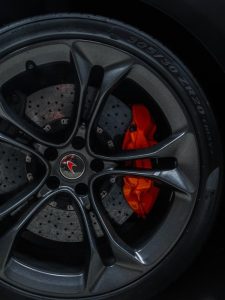 When it comes to enhancing a vehicle’s performance and aesthetics, TRD (Toyota Racing Development) rims and wheels often take center stage for automotive enthusiasts. However, the safety of these aftermarket parts is a crucial aspect that should not be overlooked. While TRD wheels are designed to meet rigorous standards and provide a blend of strength, weight reduction, and visual appeal, it’s important for consumers to understand the implications of their choices. The right wheels can improve handling and stability, but improper selection or installation can lead to serious safety risks.
When it comes to enhancing a vehicle’s performance and aesthetics, TRD (Toyota Racing Development) rims and wheels often take center stage for automotive enthusiasts. However, the safety of these aftermarket parts is a crucial aspect that should not be overlooked. While TRD wheels are designed to meet rigorous standards and provide a blend of strength, weight reduction, and visual appeal, it’s important for consumers to understand the implications of their choices. The right wheels can improve handling and stability, but improper selection or installation can lead to serious safety risks. Check the condition of the rims for any signs of cracks, dents, or corrosion. These issues can compromise the integrity of the wheel and potentially lead to dangerous situations on the road. Moreover, ensure that the tires mounted on those rims are properly inflated according to the manufacturer’s specifications. Under-inflation can cause uneven wear and increase the chance of a blowout, while over-inflation can result in a harsh ride and reduced traction. Regular maintenance checks are essential to ensure that the wheels remain in good condition, as factors like corrosion, wear, and tear can significantly impact their safety over time.
Check the condition of the rims for any signs of cracks, dents, or corrosion. These issues can compromise the integrity of the wheel and potentially lead to dangerous situations on the road. Moreover, ensure that the tires mounted on those rims are properly inflated according to the manufacturer’s specifications. Under-inflation can cause uneven wear and increase the chance of a blowout, while over-inflation can result in a harsh ride and reduced traction. Regular maintenance checks are essential to ensure that the wheels remain in good condition, as factors like corrosion, wear, and tear can significantly impact their safety over time. Political campaigns are no longer limited to rallies, billboards, and TV ads. Social media platforms like Instagram play a critical role in shaping public opinion, connecting with voters, and promoting candidates. One tool that’s catching attention is the Instagram email extractor online – a tool that allows campaigns to gather publicly available email addresses associated with Instagram profiles. But what does this mean for politics, and how are these tools used in campaigns?
Political campaigns are no longer limited to rallies, billboards, and TV ads. Social media platforms like Instagram play a critical role in shaping public opinion, connecting with voters, and promoting candidates. One tool that’s catching attention is the Instagram email extractor online – a tool that allows campaigns to gather publicly available email addresses associated with Instagram profiles. But what does this mean for politics, and how are these tools used in campaigns?
 There is room for government intervention in the business brokerage industry. Governments can incentivize small business sales by offering tax advantages or subsidized legal services, for example. Opportunities for business brokers may arise as a result of these measures, which can raise the number of enterprises on the market.
There is room for government intervention in the business brokerage industry. Governments can incentivize small business sales by offering tax advantages or subsidized legal services, for example. Opportunities for business brokers may arise as a result of these measures, which can raise the number of enterprises on the market.

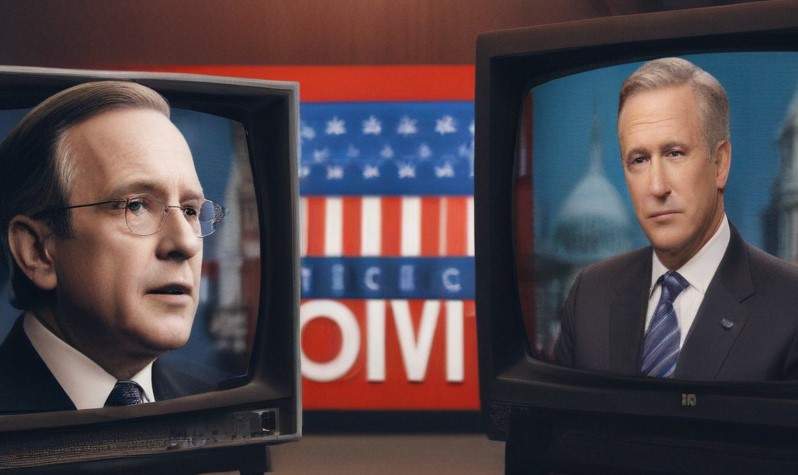

 BENEFITS OF SEUS LIGHTING
BENEFITS OF SEUS LIGHTING


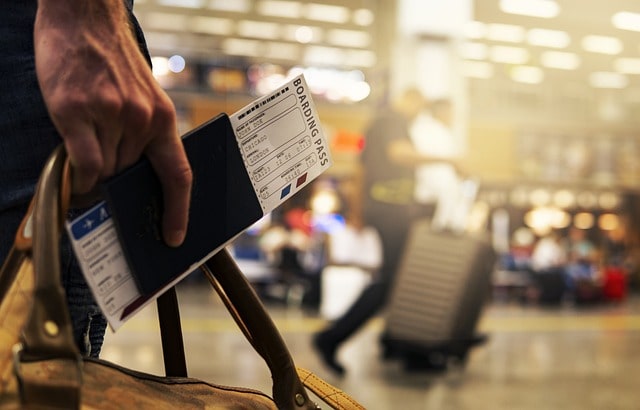
 In the fast-paced world of politics, staying ahead of the curve is crucial. With the advent of digital platforms and the #1 Backlinks Outreach Agency, political campaigns have evolved, and online visibility has become paramount.
In the fast-paced world of politics, staying ahead of the curve is crucial. With the advent of digital platforms and the #1 Backlinks Outreach Agency, political campaigns have evolved, and online visibility has become paramount.





